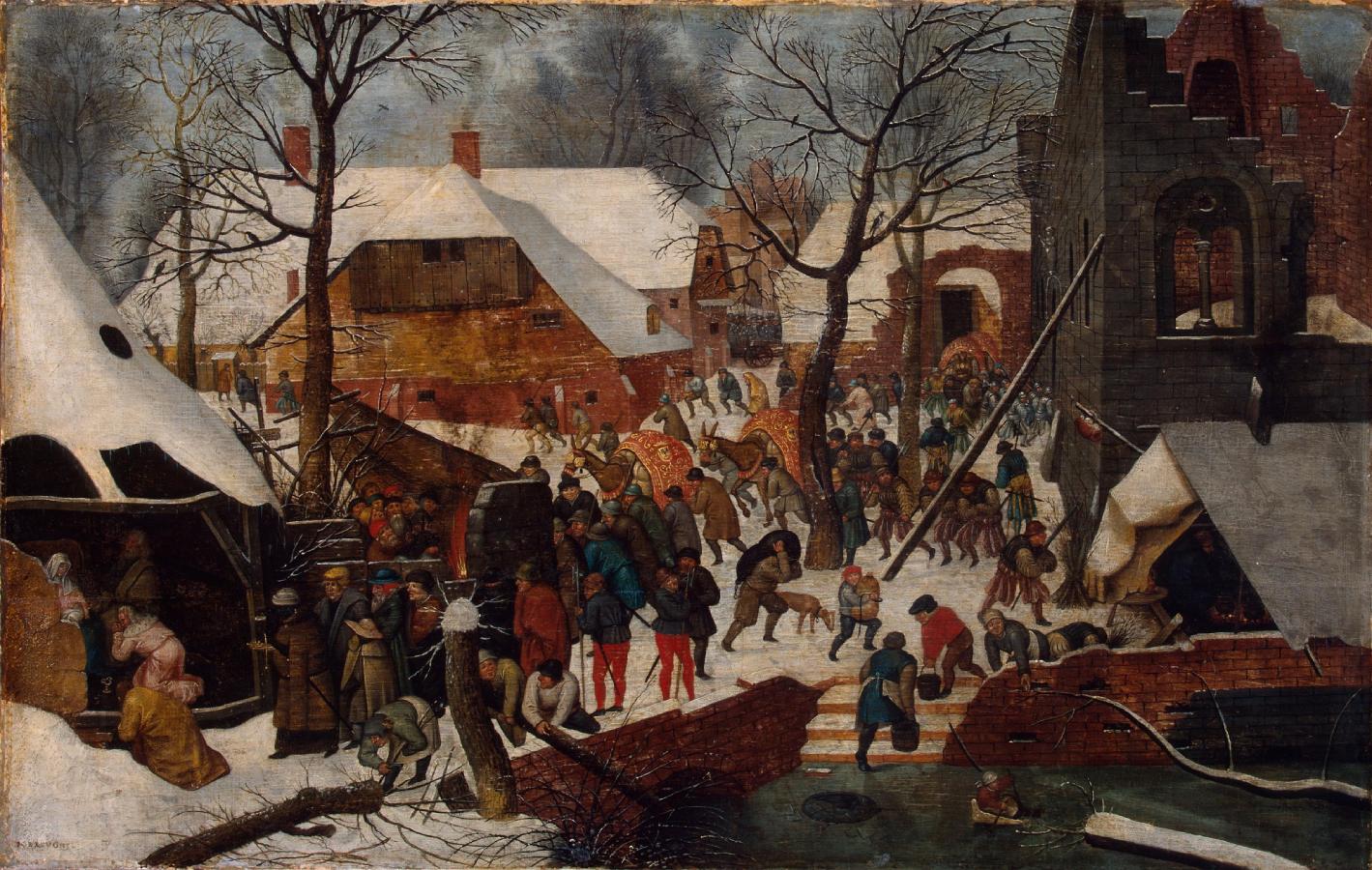Brueghel, Pieter the Younger (1564-1638)
Adoration of the Magi
2nd half of the 16th century
Oil on canvas, 36 x 56 cm
Hermitage Museum, Saint Petersburg
Peter Brueghel the Younger based this painting on a work by his father, the great 16th-century Netherlandish painter Pieter Bruegel the Elder. As interpreted here, the biblical scene of the Adoration of the Magi becomes an unusual event in the life of a small Netherlandish town. The central episode, which relates to the Nativity of Christ, takes place not in the centre but to one side, and is almost lost amongst many other events. The exotic caravan of camels with rich gifts for the Christ Child is also lost in the crowd. The inhabitants of the town are amazed at the appearance of these foreigners, who bow so respectfully to Mary and the Child. Yet this does not interrupt the everyday rhythm of their life and the streets are filled with tiny figures, all going about their usual affairs: some are chopping wood, some carrying water, others are setting off to go hunting. Brueghel‘s realism is also clear in the treatment of nature. The action takes place in the winter and the roofs and ground are covered in snow, the water frozen, whilst the bare trees and birds on the branches stand out sharply against the sky. Brueghel‘s love of his native countryside, which he sought to show at different times of the year, anticipates the achievements of 17th-century Dutch landscape painters. (SHM)
